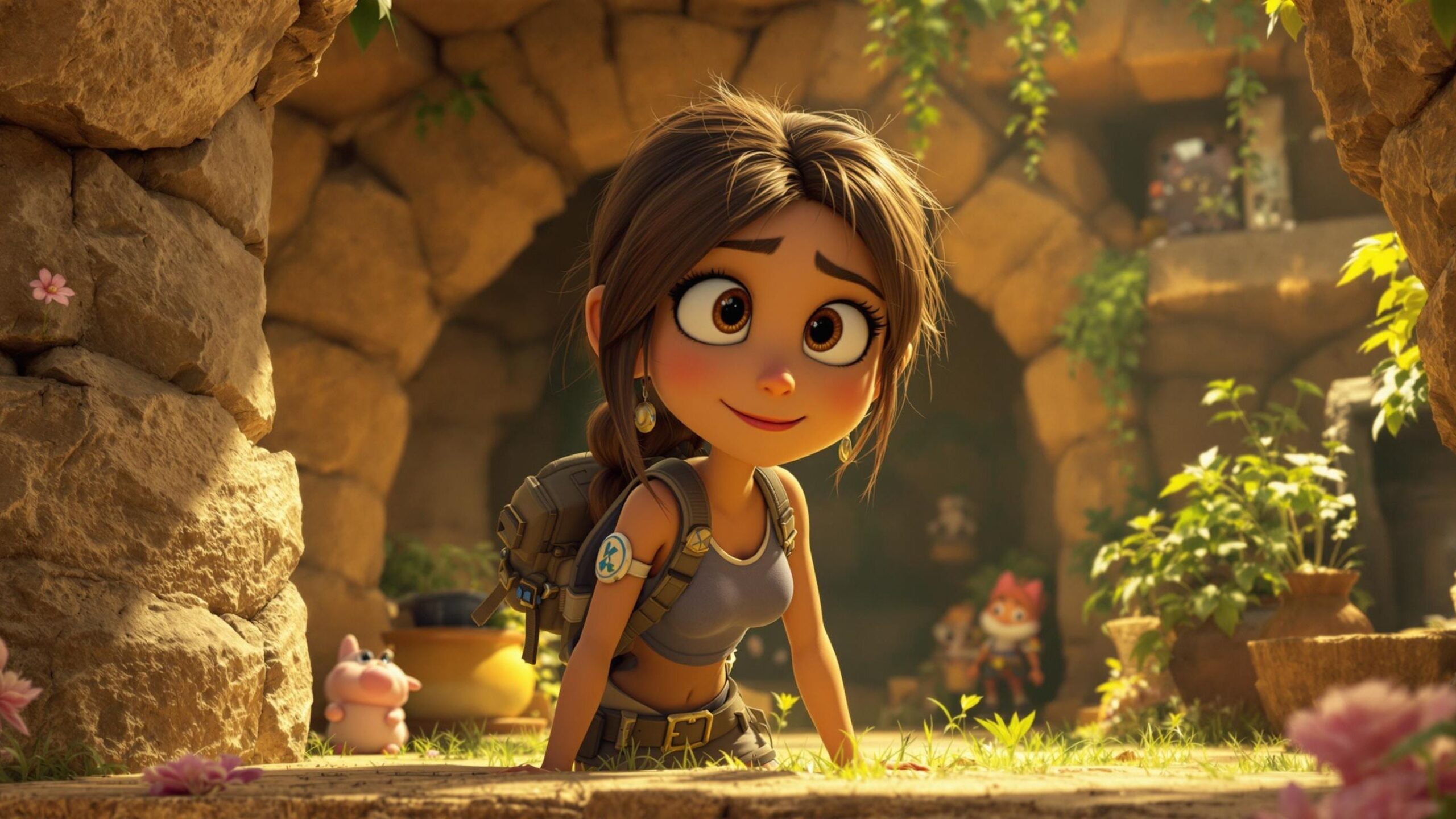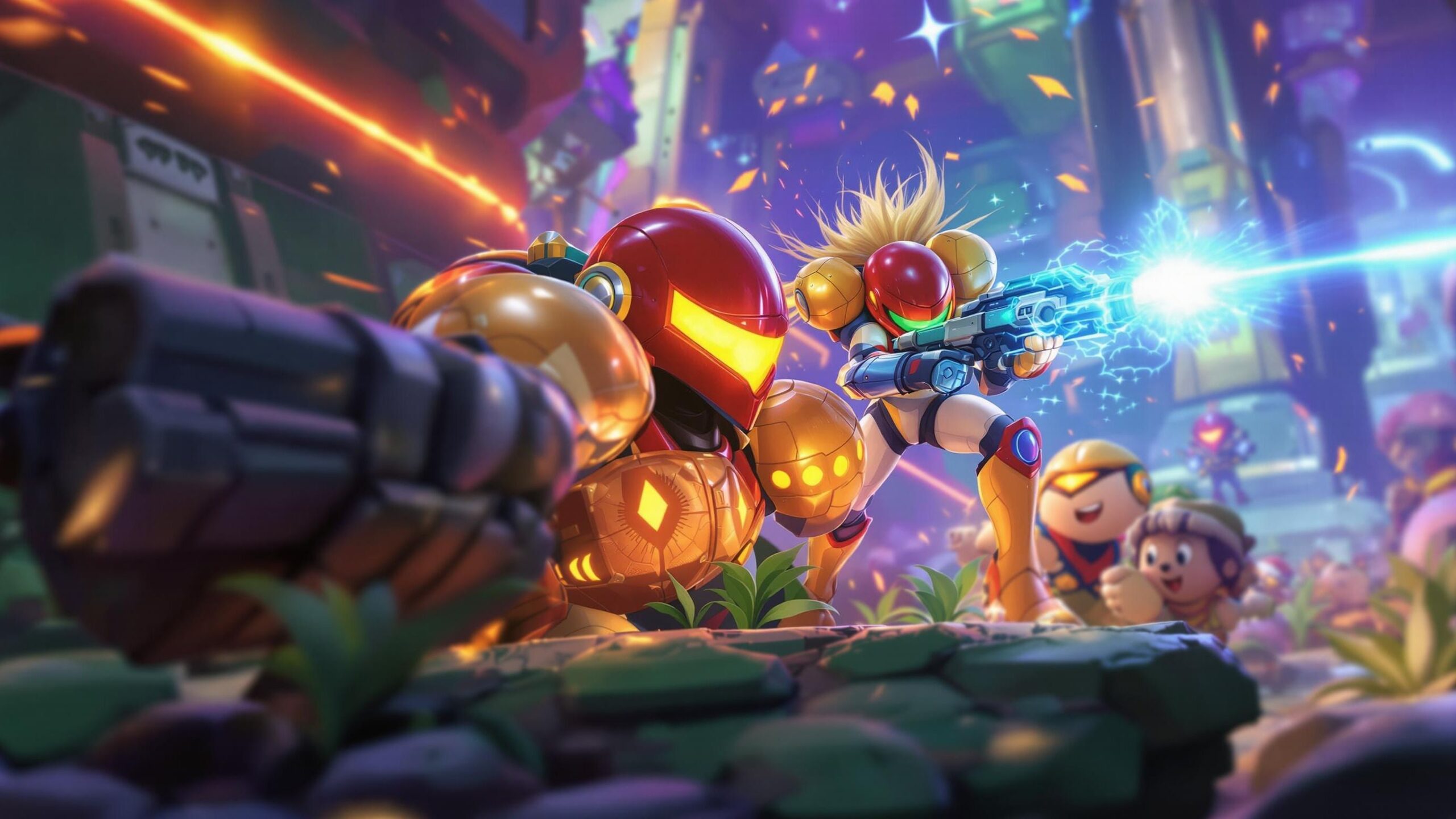Few names in gaming conjure up the spirit of adventure quite like Lara Croft. Since her debut in 1996, she’s become the definitive tomb raider—an explorer of ancient civilizations, a master of survival, and an icon of grit and intelligence. But Lara’s greatest tests weren’t the enemies she fought—they were the tombs themselves. Each tomb came alive with traps, puzzles, supernatural forces, and deadly environments designed to crush anyone who dared enter. Today, we journey through the ten most dangerous tombs Lara Croft has ever explored battles of body, mind, and soul that shaped her legend.
#10: The Lost Valley – Peru (“Tomb Raider,” 1996)
In Lara Croft’s very first expedition, the Lost Valley of Peru offered a brutal introduction to just how deadly her adventures would become. Beneath the lush jungle canopy, the valley hid treacherous cliffs, rickety bridges, and cunning traps that could spell instant death. But what truly set this tomb apart—and cemented it into gaming legend—was its unforgettable inhabitants: living dinosaurs. The moment Lara faced down a roaring Tyrannosaurus rex, players everywhere knew this was no ordinary treasure hunt. Beyond the shocking visuals, the valley’s design forced players to think vertically, with layered environments that made every jump and climb perilous. Developers at Core Design reportedly struggled with the dinosaur AI at the time, making it one of the earliest examples of large-scale enemy encounters in 3D gaming. The Lost Valley wasn’t just about finding artifacts; it was about surviving a savage past clawing its way into the present.
#9: The Tomb of Tihocan – Greece (“Tomb Raider,” 1996)
Ancient Greece holds no shortage of myths and mysteries, and in the Tomb of Tihocan, Lara faced a gauntlet crafted to challenge even the gods. Located deep within crumbling ruins, the tomb was filled with elaborate puzzles involving timed switches, movable blocks, and pressure plates—many with lethal consequences. Water hazards added to the peril, as players often had to dive into flooded chambers while racing against dwindling oxygen levels. Legends speak of Tihocan as one of the rulers of Atlantis, and this tomb blends real-world Greek architectural influences with the Atlantean mythos Core Design crafted for the series. A particularly brutal moment involved an arena filled with centaur statues—many of which suddenly came to life and attacked. The Tomb of Tihocan demanded not just agility, but intense observation and problem-solving. Few players forget the haunting echo of footsteps in those ancient halls, each step a heartbeat closer to death.
#8: The Burial Chamber of the Atlantean Pyramid – Atlantis (“Tomb Raider,” 1996)
If the earlier tombs of Tomb Raider tested Lara’s skills, the Atlantean Pyramid tested her will. A hellish nightmare of pulsing walls, deformed enemies, and shifting floors, this final stage was more horror story than archaeological dig. Inspired by descriptions of the underworld from Dante’s Inferno, Core Design pushed the atmosphere to its limits: the very architecture seemed to breathe, and the mutant guardians resembled grotesque hybrids of man and beast. Players found themselves ambushed by enemies capable of regenerating, forcing new tactics for survival. Moreover, unstable floors collapsed underfoot, dropping Lara into lethal pits if she lingered even a second too long. The pyramid’s “living flesh” aesthetic was revolutionary at the time and made players feel like they were exploring something that should never have existed. To conquer it, Lara had to rely on everything she had learned—and even then, sheer grit and luck were just as important as skill.
#7: The Temple of Xian – China (“Tomb Raider II,” 1997)
No list of Lara’s deadliest tombs would be complete without mentioning the Temple of Xian. Hidden deep within the Great Wall of China, this massive temple wasn’t just deadly—it was an intricate masterpiece of danger. Spiked walls, trapdoors, timed jumps across lava flows, and blade traps made every step a potential death sentence. The stakes were high: Lara was after the Dagger of Xian, an artifact said to grant its wielder the power of a dragon. Much of the temple’s design incorporated actual Chinese mythology and ancient military defense strategies, which explains the relentless series of trials. One hidden gem? The elaborate dragon statues that served not just as decoration, but as deadly turrets, spitting fireballs if Lara wasn’t careful. In interviews, developers later revealed that players were originally meant to face even more supernatural enemies, but technical limits forced them to scale back. Even without them, the Temple of Xian remains a tomb that demands—and punishes—precision.
#6: The Obscura Paintings Vaults – Italy (“Tomb Raider: The Angel of Darkness,” 2003)
Stepping away from lost civilizations into gothic horror, Angel of Darkness gave Lara one of her most unsettling challenges yet: retrieving the Obscura Paintings hidden beneath Paris and Rome. These ancient vaults weren’t just dark—they were practically alive with menace. Ancient deathtraps mixed with supernatural horrors, including monstrous guardians warped by forbidden alchemy. Navigating narrow, crumbling corridors, Lara had to solve puzzles based on real Renaissance occult theories—where artwork itself could possess destructive powers. A fascinating detail: many elements of these vaults were inspired by Leonardo da Vinci’s lesser-known works on cryptography and mechanical engineering. Every moment in the Obscura Vaults forced players into a psychological game of nerves: was that wall safe? Could that floor collapse? Was the painting itself cursed? It was less an adventure and more a descent into madness.
#5: The Chasm Monastery – Yamatai (“Tomb Raider,” 2013)
In Lara’s brutal 2013 reboot, the Chasm Monastery served as a brutal crucible of fire and death. Situated at the heart of the cursed island of Yamatai, this shrine to the Sun Queen Himiko was under constant siege from elemental forces—and those forces were decidedly not welcoming. Throughout the monastery, Lara faced collapsing floors, storms that seemed to have a malevolent intelligence, and the dreaded Solarii cult who would stop at nothing to keep Himiko’s power alive. One brilliant design note: the Monastery shifts structurally as the storm intensifies, meaning puzzles and pathways could literally change while you were solving them. The visual motif of burning scrolls and desecrated shrines added to the eerie, suffocating atmosphere. For Lara, surviving the Chasm Monastery wasn’t just about reaching the top—it was about weathering a supernatural storm bent on erasing her entirely.
#4: The Orrery – Syria (“Rise of the Tomb Raider,” 2015)
Few moments in Lara’s second rebooted adventure were as breathtaking—and terrifying—as the Orrery deep beneath Syria’s desert sands. This ancient celestial machine was more than just a relic; it was a rotating deathtrap where a single misstep meant falling into the abyss. Intricately designed based on the real-world Antikythera mechanism, the Orrery required timing, physics knowledge, and fast reflexes to survive. What many don’t realize is that actual historians consulted on the structure’s authenticity, making this not just a beautiful level, but a tribute to ancient ingenuity. Beyond the mechanical danger, collapsing beams, rising sand traps, and patrolling deathless warriors kept Lara constantly under pressure. Solving the Orrery was about aligning the heavens themselves—a brilliant metaphor for Lara’s journey toward understanding history’s lost truths, even as it tried to crush her.
#3: The Chamber of the Gods – Kitezh (“Rise of the Tomb Raider,” 2015)
Buried under the frozen expanse of Siberia, the mythical city of Kitezh offered Lara a final challenge that pushed her endurance to the limit. At the heart of Kitezh, the Chamber of the Gods was an awe-inspiring—and lethally unstable—arena where ancient mechanisms could collapse entire rooms in moments. Battling brutal soldiers and facing deadly puzzles involving water, ice, and crumbling architecture, Lara had to master both strength and timing. One hidden gem? The chamber’s murals, when translated, offered fragmented clues to solving the next deathtrap—a nod to real archaeological practices where ancient art holds keys to history. Kitezh’s legend is rooted in the real Russian myth of a city that vanished into a lake to escape conquest, and the developers at Crystal Dynamics wove that eerie inevitability into every collapsing wall and sinking floor. It was as if Kitezh wanted to bury its secrets forever.
#2: The Path of Huracan – Paititi (“Shadow of the Tomb Raider,” 2018)
In Shadow of the Tomb Raider, Lara’s path through the Mayan-influenced city of Paititi brought her face-to-face with one of her most grueling gauntlets: the Path of Huracan. Named for the Mayan god of storms and chaos, this tomb delivered floods, fire traps, spike walls, and collapsing stairways all with a chilling sense of inevitability. At several points, the tomb forces players into narrow corridors that flood faster than Lara can swim—requiring absolute perfection in navigation. Developers have shared that they wanted Huracan’s path to feel like Lara was battling a god itself, and it shows in the scale and relentlessness of the traps. Hidden secrets scattered through the tomb reveal pieces of ancient prayers—pleas for mercy from Huracan—that lend a human sorrow to the overwhelming violence of the setting. It’s a brilliant, devastating piece of design.
#1: The Cenote – Paititi (“Shadow of the Tomb Raider,” 2018)
Finally, there’s the Cenote—a sprawling network of underwater caves, tombs, and sacrificial altars that ranks as Lara’s deadliest environment to date. From the moment Lara plunges into the dark waters, the Cenote feels wrong—eerie, claustrophobic, and violently alive. Fast-moving currents threaten to smash her against jagged rocks, while monstrous undead creatures called the Yaaxil lurk in the shadows. Worst of all, oxygen is a constant battle; every wrong turn risks drowning. Archaeologically, cenotes were sacred spaces to the ancient Maya—places of worship, sacrifice, and mystery—and Shadow of the Tomb Raider captured that blend of wonder and terror perfectly. One terrifying detail: the deeper Lara goes, the more the cavern seems to whisper and echo with the voices of the dead. The Cenote is a masterclass in environmental storytelling—and in the end, survival feels less like victory and more like a narrow escape from the very jaws of history itself. Lara Croft has explored countless ruins, but these tombs were more than history lessons—they were battles for her very soul. Every broken ledge, triggered trap, and monstrous enemy pushed her closer to the edge—and cemented her as gaming’s ultimate survivor. These deadly adventures are the reason Lara Croft remains a timeless icon, forever reaching for the light even when the darkness tries to pull her under.




